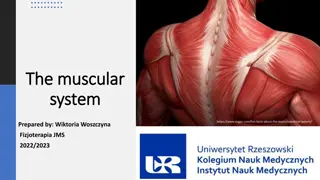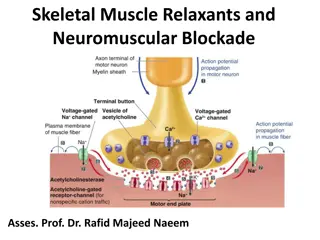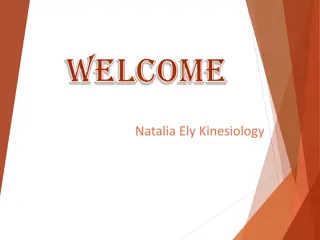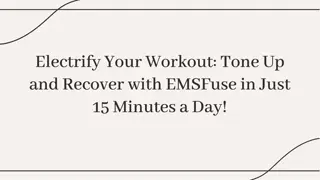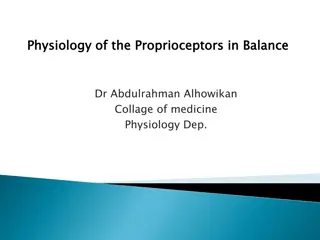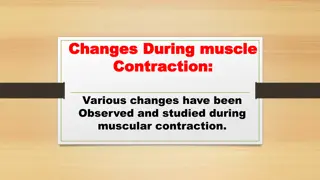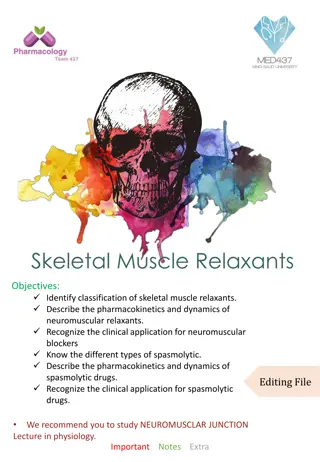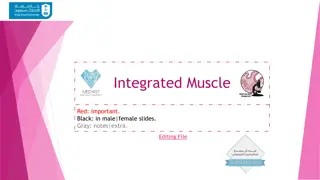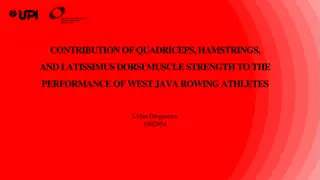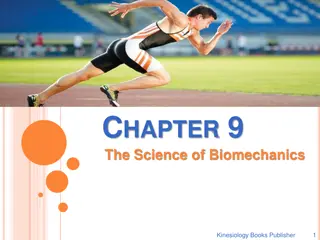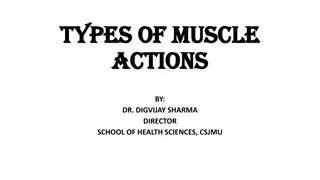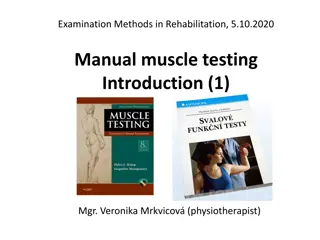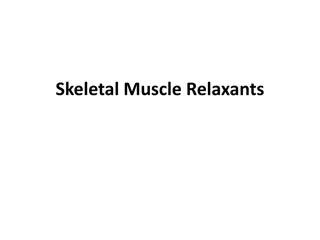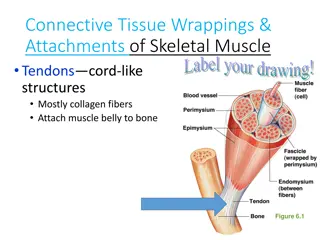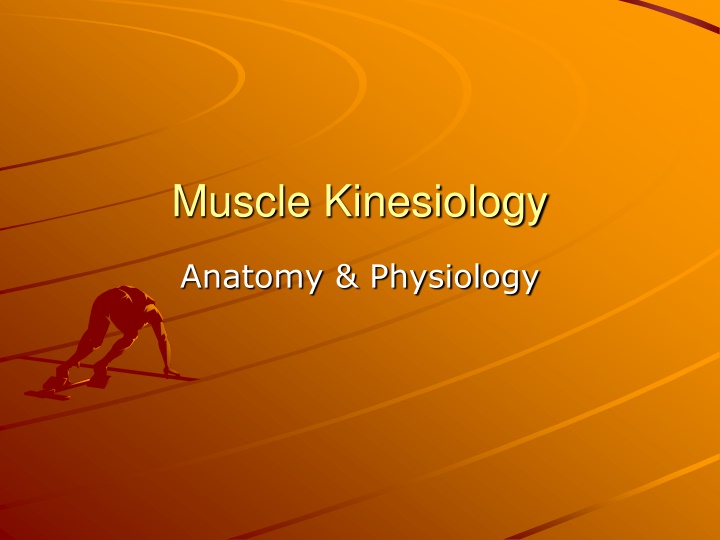
Muscle Kinesiology, Anatomy, and Physiology
Explore the intricate world of muscle kinesiology, anatomy, and physiology, learning about muscle movement, origins, insertions, and different muscle groups. Discover the roles of prime movers, antagonists, and synergists in producing body movements. Dive into examples of primary antagonistic actions of the muscular system, such as flexion/extension and abduction/adduction. Unravel the complexity of muscular functions and actions through detailed explanations and illustrations.
Uploaded on | 1 Views
Download Presentation

Please find below an Image/Link to download the presentation.
The content on the website is provided AS IS for your information and personal use only. It may not be sold, licensed, or shared on other websites without obtaining consent from the author. If you encounter any issues during the download, it is possible that the publisher has removed the file from their server.
You are allowed to download the files provided on this website for personal or commercial use, subject to the condition that they are used lawfully. All files are the property of their respective owners.
The content on the website is provided AS IS for your information and personal use only. It may not be sold, licensed, or shared on other websites without obtaining consent from the author.
E N D
Presentation Transcript
Muscle Kinesiology Anatomy & Physiology
Who came up with those LONG names? Many of the names come from Latin and the regional skeletal bones How many skeletal muscles can you name?
Muscle Movement Movement produced by contraction and pulling on attached bone Point of attachment of tendons to bones is called ORIGINS AND INSERTIONS ORIGIN: attachment to stationary/immovable bone INSERTION: attachment to movable bone
Image Preview 1. Contraction causes insertion to be pulled to origin. 2. Long head- tendon attaches to scapula 3. Short head- attached to clavicle
Group Action: muscles working in groups to produce body movement Prime Movers: (agonist) Muscles primarily involved in being responsible for a particular movement i.e-raising hand(deltoid) Antagonists: Muscles that oppose or reverse the action of the PM. Synergist: (helper) muscle that aids the PM in a particular movement.
Prime mover- biceps Antagonist-triceps brachii Synergists- other muscles of forearm to stabilize the elbow joint
Primary Antagonistic Actions of Muscular system (examples of) 1.Flexion/Extension: quadriceps femoris and hamstrings for hip and knee 2.Abduction/Adduction: lats and deltoid for arm 3.Elevation/Depression: various parts of traps to shrug and release shoulders
Cont. 4.Pronation/Supination: flexor and extension muscles in hand allow palm to turn in, palm turned out=thumbs up/thumbs down 5.Dorsiflexion/Plantar flexion: tibialis anterior vs tibialis posterior= foot flexion up and foot extension down. 6.Inversion/Eversion:tibialis anterior/posterior and fibularis longus= foot in and out
Seven ways we name muscles CHARACTERISTIC Description EXAMPLES IN HUMANS 1.Direction of fascicles relative to midline rectus = parallel transverse = perpendicular oblique = at 45o angle frontal bone tibia Rectus abdominus Transversus abdominus External Oblique 2.Location (i.e. the bone or body part that a muscle covers) 3.Relative Size Frontalis Tibialis Anterior maximus = largest longus = longest brevis = shortest Gluteus maximus Palmaris longus fibularis brevis
Muscle naming cont 4.Number of Origins (Heads) biceps = 2 origins triceps = 3 origins Biceps brachii Triceps brachii 5. Shape deltoid = triangle trapezius = trapezoid serratus = saw-toothed orbicularis = circular origin = sternum insertion = mastoid process flexion extension adduction Deltoid Trapezius Serratus anterior Orbicularis oris Sternocleidomastoid 6. Location of Origin and/or Insertion 7. Action of Muscle Flexor carpi radialis Extensor digitorum Adductor longus
Quick Quiz (2 points/bullet) 1.Points of attachment of tendons to bone are called: 2.Muscles that oppose the prime mover (agonist) are called what? 3.Which of the 7 ways we name muscles helps explain the naming of the rectus abdominus? 4. Give an example of a muscle name based on its shape (also give the shape)? 5.What two groups of muscles work to flex and extend the knee and hip?


